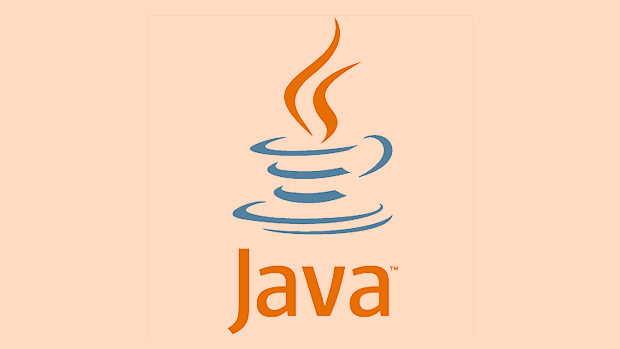To prevent and diagnose memory leaks in Java, the core method is "early detection and early processing". 1. First of all, you need to understand common scenarios: such as the static collection class not being released, the listener not being logged out, the cache not being invalidated, and the use of ThreadLocal improperly. 2. Secondly, use tools to assist detection, such as VisualVM preliminary positioning, MAT analysis heap dump, YourKit/JProfiler in-depth analysis, and JConsole observation of memory trends. 3. In daily development, you should avoid long-term holding of useless objects, using weak references, using ThreadLocal reasonably and removing timely, registering and logging out the listener, unit test simulation to simulate long-term operation, and setting appropriate JVM parameters to enable GC logs, thereby effectively preventing memory leaks.

Java memory leaks are a common problem that many developers encounter during project operation, especially in long-running applications. Memory leaks will cause system performance to decline and even cause OutOfMemoryError, affecting service stability. So how to prevent and diagnose memory leaks in Java? In fact, the core idea is "early detection and early treatment".

1. Understand common memory leak scenarios
To solve the problem, you must first know what the problem is. Several of the most common memory leaks in Java include:

- Static collection class holds objects not released : For example, a static HashMap constantly adds objects but does not clear them.
- Listeners and callbacks are not logged out : For example, references in event listeners and observer modes are not cleaned up in time.
- Cache is not valid correctly : the cached data has been growing without cleaning mechanism.
- Improper use of thread-local variables (ThreadLocal) : If ThreadLocal does not have remove or thread pool multiplex threads, it is easy to cause memory accumulation.
These situations are often not visible at a glance, and need to be investigated in combination with actual code logic.
2. Use tools to assist in detecting memory problems
It is difficult to find all problems by just looking at the code, so you need to use some tools to help. Commonly used tools are:

- VisualVM : Lightweight, comes with JDK, which can view heap memory, threads, class loading and other information in real time, suitable for preliminary positioning.
- Eclipse MAT (Memory Analyzer) : It is specially used to analyze heap dump files, which can find out which objects occupy a lot of memory and display the reference chain.
- YourKit/JProfiler : Commercial tool, more powerful and supports more in-depth performance analysis.
- JConsole / JMX : It can monitor the running status of the JVM and observe the memory usage trend.
The general approach is to first observe the memory trend through VisualVM, export the heap dump when you suspect there is a problem, and then use MAT to analyze which specific class or object has abnormal growth.
3. How to prevent memory leaks in daily development
Prevention is more important than repair. Pay attention to the following points in daily coding, which can effectively reduce the risk of memory leakage:
- Avoid unnecessary long-term holding of objects : especially static references and caching.
- Handling temporary mapping relationships using WeakHashMap : suitable for objects with uncertain life cycles.
- Use ThreadLocal reasonably and remember to remove : especially when using thread pools.
- Remember to log out after registering the listener : such as Swing, Spring event listening, etc.
- Simulate long-running scenarios in unit tests : helps to detect potential leaks in advance.
In addition, it is also important to set appropriate JVM parameters in the deployment environment, such as turning on GC logs, which can help with subsequent analysis.
Basically that's it. Although memory leaks sound scary, as long as you pay more attention to writing and tool assistance, most problems can be discovered and solved in a timely manner.
The above is the detailed content of Preventing and Diagnosing Java Memory Leaks. For more information, please follow other related articles on the PHP Chinese website!

Hot AI Tools

Undress AI Tool
Undress images for free

Undresser.AI Undress
AI-powered app for creating realistic nude photos

AI Clothes Remover
Online AI tool for removing clothes from photos.

Clothoff.io
AI clothes remover

Video Face Swap
Swap faces in any video effortlessly with our completely free AI face swap tool!

Hot Article

Hot Tools

Notepad++7.3.1
Easy-to-use and free code editor

SublimeText3 Chinese version
Chinese version, very easy to use

Zend Studio 13.0.1
Powerful PHP integrated development environment

Dreamweaver CS6
Visual web development tools

SublimeText3 Mac version
God-level code editing software (SublimeText3)

Hot Topics
 Difference between HashMap and Hashtable?
Jun 24, 2025 pm 09:41 PM
Difference between HashMap and Hashtable?
Jun 24, 2025 pm 09:41 PM
The difference between HashMap and Hashtable is mainly reflected in thread safety, null value support and performance. 1. In terms of thread safety, Hashtable is thread-safe, and its methods are mostly synchronous methods, while HashMap does not perform synchronization processing, which is not thread-safe; 2. In terms of null value support, HashMap allows one null key and multiple null values, while Hashtable does not allow null keys or values, otherwise a NullPointerException will be thrown; 3. In terms of performance, HashMap is more efficient because there is no synchronization mechanism, and Hashtable has a low locking performance for each operation. It is recommended to use ConcurrentHashMap instead.
 What are static methods in interfaces?
Jun 24, 2025 pm 10:57 PM
What are static methods in interfaces?
Jun 24, 2025 pm 10:57 PM
StaticmethodsininterfaceswereintroducedinJava8toallowutilityfunctionswithintheinterfaceitself.BeforeJava8,suchfunctionsrequiredseparatehelperclasses,leadingtodisorganizedcode.Now,staticmethodsprovidethreekeybenefits:1)theyenableutilitymethodsdirectly
 How does JIT compiler optimize code?
Jun 24, 2025 pm 10:45 PM
How does JIT compiler optimize code?
Jun 24, 2025 pm 10:45 PM
The JIT compiler optimizes code through four methods: method inline, hot spot detection and compilation, type speculation and devirtualization, and redundant operation elimination. 1. Method inline reduces call overhead and inserts frequently called small methods directly into the call; 2. Hot spot detection and high-frequency code execution and centrally optimize it to save resources; 3. Type speculation collects runtime type information to achieve devirtualization calls, improving efficiency; 4. Redundant operations eliminate useless calculations and inspections based on operational data deletion, enhancing performance.
 What is an instance initializer block?
Jun 25, 2025 pm 12:21 PM
What is an instance initializer block?
Jun 25, 2025 pm 12:21 PM
Instance initialization blocks are used in Java to run initialization logic when creating objects, which are executed before the constructor. It is suitable for scenarios where multiple constructors share initialization code, complex field initialization, or anonymous class initialization scenarios. Unlike static initialization blocks, it is executed every time it is instantiated, while static initialization blocks only run once when the class is loaded.
 What is the Factory pattern?
Jun 24, 2025 pm 11:29 PM
What is the Factory pattern?
Jun 24, 2025 pm 11:29 PM
Factory mode is used to encapsulate object creation logic, making the code more flexible, easy to maintain, and loosely coupled. The core answer is: by centrally managing object creation logic, hiding implementation details, and supporting the creation of multiple related objects. The specific description is as follows: the factory mode handes object creation to a special factory class or method for processing, avoiding the use of newClass() directly; it is suitable for scenarios where multiple types of related objects are created, creation logic may change, and implementation details need to be hidden; for example, in the payment processor, Stripe, PayPal and other instances are created through factories; its implementation includes the object returned by the factory class based on input parameters, and all objects realize a common interface; common variants include simple factories, factory methods and abstract factories, which are suitable for different complexities.
 What is the `final` keyword for variables?
Jun 24, 2025 pm 07:29 PM
What is the `final` keyword for variables?
Jun 24, 2025 pm 07:29 PM
InJava,thefinalkeywordpreventsavariable’svaluefrombeingchangedafterassignment,butitsbehaviordiffersforprimitivesandobjectreferences.Forprimitivevariables,finalmakesthevalueconstant,asinfinalintMAX_SPEED=100;wherereassignmentcausesanerror.Forobjectref
 What is type casting?
Jun 24, 2025 pm 11:09 PM
What is type casting?
Jun 24, 2025 pm 11:09 PM
There are two types of conversion: implicit and explicit. 1. Implicit conversion occurs automatically, such as converting int to double; 2. Explicit conversion requires manual operation, such as using (int)myDouble. A case where type conversion is required includes processing user input, mathematical operations, or passing different types of values ??between functions. Issues that need to be noted are: turning floating-point numbers into integers will truncate the fractional part, turning large types into small types may lead to data loss, and some languages ??do not allow direct conversion of specific types. A proper understanding of language conversion rules helps avoid errors.
 Why do we need wrapper classes?
Jun 28, 2025 am 01:01 AM
Why do we need wrapper classes?
Jun 28, 2025 am 01:01 AM
Java uses wrapper classes because basic data types cannot directly participate in object-oriented operations, and object forms are often required in actual needs; 1. Collection classes can only store objects, such as Lists use automatic boxing to store numerical values; 2. Generics do not support basic types, and packaging classes must be used as type parameters; 3. Packaging classes can represent null values ??to distinguish unset or missing data; 4. Packaging classes provide practical methods such as string conversion to facilitate data parsing and processing, so in scenarios where these characteristics are needed, packaging classes are indispensable.






